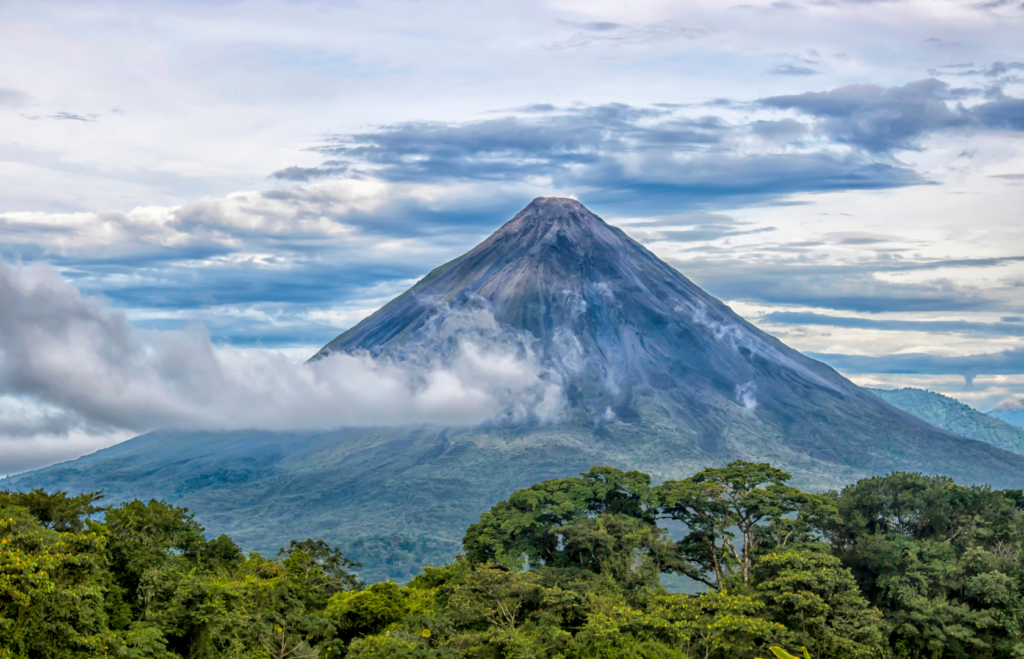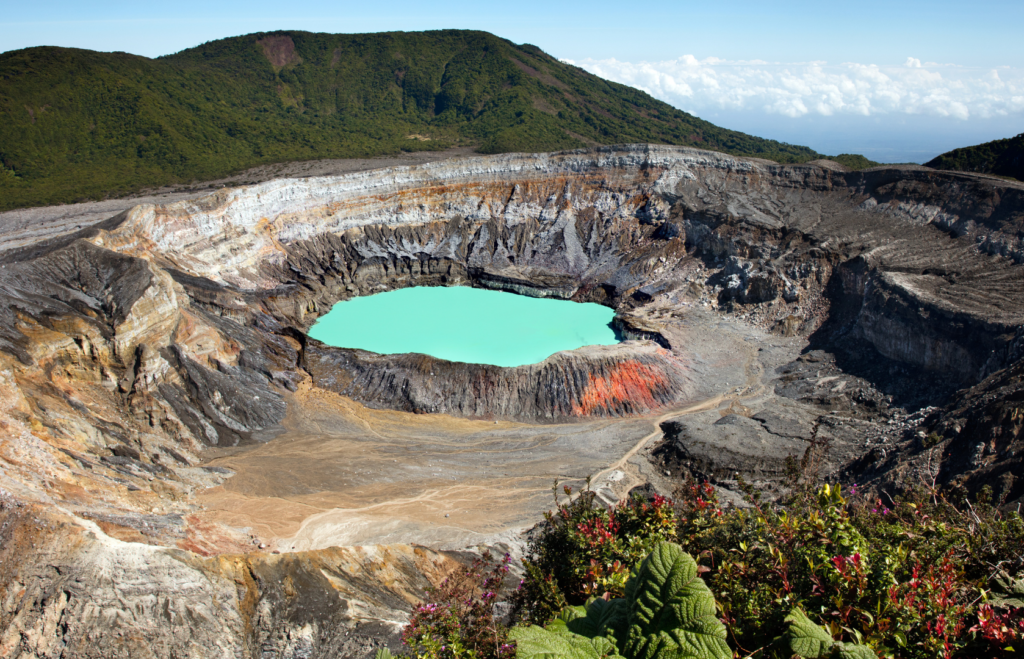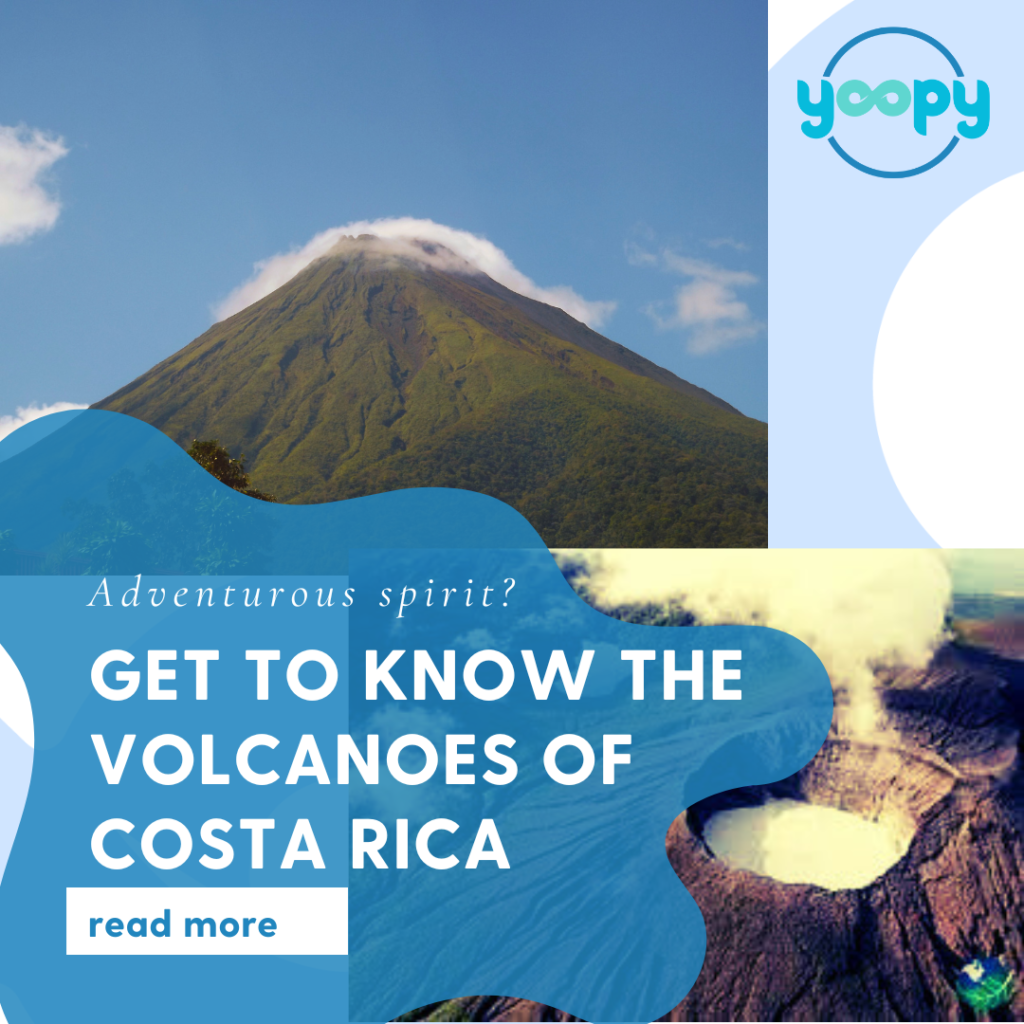Costa Rica, land of active volcanoes

Costa Rica, a lush paradise nestled in the heart of Central America, is renowned for its breathtaking natural beauty, biodiversity, and, notably, its impressive array of active and dormant volcanoes of Costa Rica. These geological giants are not only a testament to the Earth’s dynamic power but also offer a unique blend of adventure, relaxation, and cultural immersion. In this comprehensive guide, we delve into the grandeur of Volcanoes of Costa Rica, from the fiery craters of Arenal to the serene heights of Irazú, highlighting the best experiences these natural wonders have to offer.
The country’s volcanic landscape is a dramatic canvas painted with the fiery reds of lava flows, the lush greens of tropical forests, and the tranquil blues of crater lakes. Among these natural marvels, Arenal stands out as one of the most iconic and active volcanoes of Costa Rica, offering a mesmerizing backdrop for countless adventures. Close by, the Poás Volcano captivates with its vast crater lake, while Irazú astonishes visitors with panoramic views that stretch to both the Pacific and Atlantic oceans on clear days.
Turrialba and Rincón de la Vieja, each with their unique geological features and ecosystems, complete the mosaic of Costa Rica’s volcanic terrain. These sites are not only centers of natural beauty but also hubs of rich biodiversity, hosting a variety of flora and fauna that thrive in these fertile grounds.
Embracing the Adventure: Activities Around the Volcanoes
The volcanoes of Costa Rica are the epicenters of adventure, offering activities that cater to every interest and fitness level. Thrill-seekers can zip line through the forest canopy, catching glimpses of the volcanoes from above, while those seeking relaxation can unwind in the mineral-rich hot springs that dot the volcanic landscape. Hiking enthusiasts will find a paradise of trails winding through national parks, leading to stunning viewpoints and crater lakes. Meanwhile, wildlife viewing and cultural tours offer a more laid-back yet equally enriching experience, allowing visitors to connect with the country’s natural wonders and indigenous heritage.
Conservation and Community: The Heart of Costa Rica’s Volcanic Regions
Beyond their dramatic beauty and recreational potential, Volcanoes of Costa Rica play a crucial role in conservation and community life. These areas are vital for protecting biodiversity, water resources, and local traditions. Efforts to preserve these habitats are ongoing, with tourists encouraged to contribute through responsible travel practices. Additionally, the volcanoes of Costa Rica support local economies through eco-tourism, providing sustainable livelihoods for many communities.
Planning Your Volcanic Adventure
Visiting volcanoes of Costa Rica requires thoughtful planning to ensure a safe, enjoyable, and environmentally respectful trip. This guide offers insights into the best times to visit, safety precautions, accommodations, and dining options, ensuring that your journey to the heart of Costa Rica’s volcanic landscape is as memorable as it is breathtaking.
Accommodations and Logistics
Where to Stay Near the Volcanoes
Finding the perfect place to stay near Costa Rica’s volcanoes can significantly enhance your travel experience. The areas surrounding Arenal, Poás, Irazú, Turrialba, and Rincón de la Vieja offer a range of accommodations, from luxury resorts to cozy eco-lodges. These lodgings often provide stunning views of the volcanoes, allowing guests to wake up to the sight of mist-covered peaks. Eco-lodges, in particular, offer a unique, sustainable travel experience, embedding you within the lush forests and rich biodiversity of Costa Rica. Many accommodations also feature hot springs, where you can relax after a day of exploration.
Getting Around Costa Rica
Costa Rica may be a small country, but its rugged terrain and lush landscapes can make getting around an adventure in itself. Renting a car is a popular option for visitors, offering the flexibility to explore the country at your own pace. However, be prepared for winding roads and varying conditions. For those who prefer not to drive, Costa Rica has a comprehensive bus network connecting major towns and tourist destinations. Private shuttles are also available for a more comfortable and direct route to your destination. For areas around volcanoes, especially in more remote regions, it might be worth considering guided tours, which provide transportation as part of the package.
Local Cuisine and Dining Experiences
Must-Try Dishes
Costa Rican cuisine is a flavorful blend of fresh ingredients, with dishes that reflect the country’s rich agricultural heritage. When visiting the volcanic regions, be sure to try Casado – a traditional dish featuring rice, beans, plantains, salad, and a choice of meat, fish, or chicken. Another must-try is Gallo Pinto, especially for breakfast; it’s a hearty mix of rice and beans seasoned with cilantro, onions, and peppers. Don’t miss the chance to savor Ceviche, made with fresh local fish marinated in lime juice and spices, a refreshing treat after a day of hiking.
Best Dining Spots with a View
Dining in Costa Rica can be an experience that feeds both your appetite and your soul, thanks to the numerous eateries set against the backdrop of the country’s stunning natural beauty. Near the Arenal Volcano, restaurants like El Mirador offer not just delicious local cuisine but also panoramic views of the volcano and Lake Arenal. In the vicinity of Irazú, Comedor La Terraza provides a scenic overlook where you can dine amidst clouds at the edge of the mountain. These spots are perfect for a meal that comes with a side of breathtaking vistas.
Photography Tips for Capturing the Volcanoes
Best Times for Photos
The key to capturing the stunning beauty of volcanoes of Costa Rica lies in timing. The early morning hours just after sunrise and the late afternoon before sunset offer the best natural lighting conditions, softening the landscape with a golden hue and enhancing the volcanoes’ majestic profiles. These times also minimize the chances of rain and cloud cover, especially important in the cloud forests surrounding the volcanoes. Additionally, the early morning light can create dramatic shadows and highlights on the volcanic slopes, adding depth and texture to your photos.
Gear Recommendations
While the beauty of Costa Rica’s volcanoes can be captured with a simple smartphone camera, those serious about photography should consider bringing more advanced equipment. A DSLR or mirrorless camera with a versatile zoom lens (24-70mm or 70-200mm) can be invaluable for both wide landscapes and detailed shots of the volcanic terrain. A tripod is also recommended, particularly for early morning or late evening shots when longer exposures are necessary to capture the full range of light. Don’t forget to bring extra batteries and memory cards, as the humid and remote conditions can be challenging for electronics.
By taking these tips into account, you can fully immerse yourself in the beauty and adventure that Costa Rica’s volcanic regions have to offer, from the comfort of your accommodations to the flavors of the local cuisine, and capturing it all through the lens of your camera.
The Eternal Allure of Costa Rica’s Volcanoes
The volcanoes of Costa Rica are more than just natural wonders; they are symbols of the country’s vibrant spirit, resilience, and commitment to conservation. Whether you’re drawn to the thrill of adventure, the pursuit of relaxation, or the desire to connect with nature and culture, Costa Rica’s volcanic regions offer an unmatched experience that calls to the heart of every traveler.
FAQs Great Volcanoes of Costa Rica
- How many volcanoes are in Costa Rica? Costa Rica is home to over 200 volcanic formations, with around 100 showing signs of volcanic activity and seven currently active.
- Is it safe to visit the volcanoes in Costa Rica? Yes, visiting Costa Rica’s volcanoes is generally safe, provided you follow park guidelines, stay on marked trails, and heed any advisories from local authorities.
- What are the best volcanoes to visit for first-time travelers? Arenal and Poás are highly recommended for their accessibility, stunning landscapes, and variety of nearby activities.
- Can you swim in the crater lakes of Volcanoes of Costa Rica? Swimming in crater lakes is not recommended and is often prohibited due to safety concerns and the preservation of these delicate ecosystems.
- What should I pack for a volcano tour in Costa Rica? Essentials include comfortable hiking shoes, rain gear, sunscreen, a hat, plenty of water, and a camera to capture the breathtaking views.
- Are there any age restrictions for volcano activities in Costa Rica? Activities such as hiking and zip lining may have age and health restrictions. It’s best to check with tour operators in advance.



